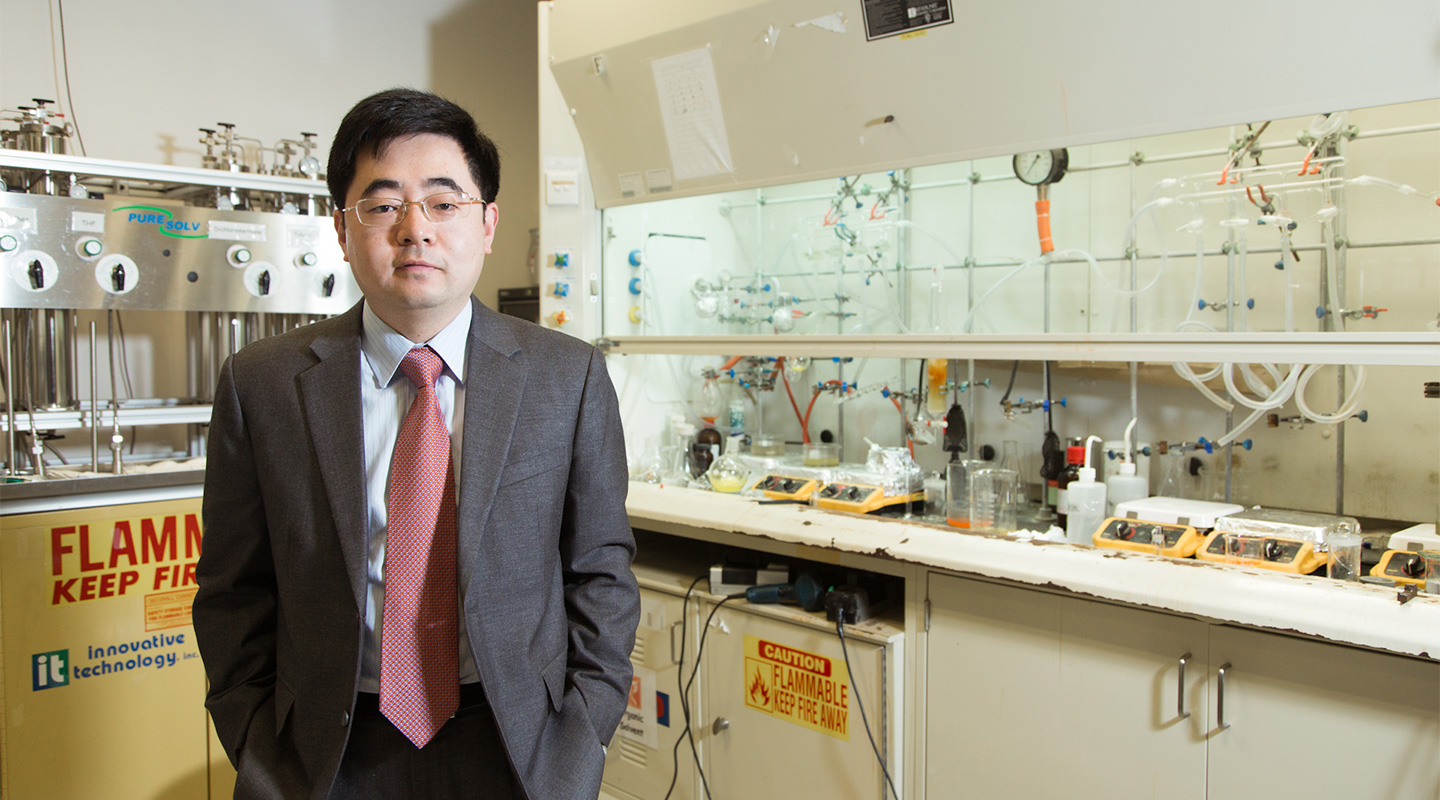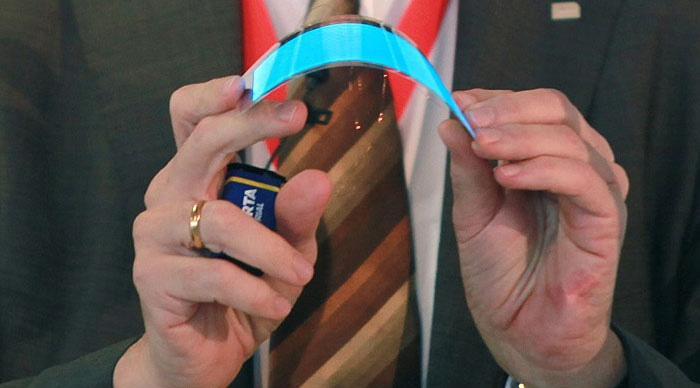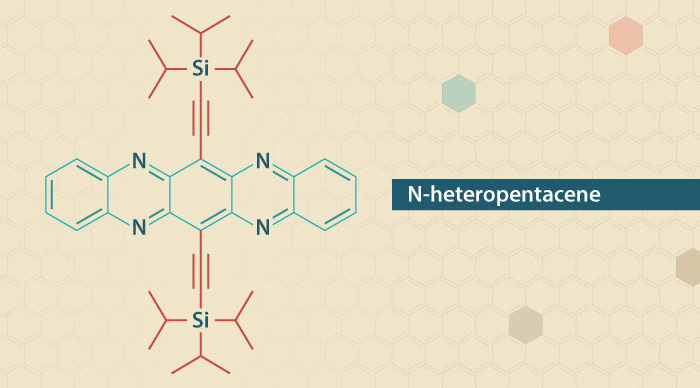Dear readers, With the launch of e-newsletter CUHK in Focus, CUHKUPDates has retired and this site will no longer be updated. To stay abreast of the University’s latest news, please go to https://focus.cuhk.edu.hk. Thank you.
Flexible Phones and Wearable Tech: A CUHK chemist's work in organic semiconductors promises many new technical applications

Prof. Miao Qian
Department of Chemistry
Thanks to the development of organic semiconductors by chemists such as Prof. Miao Qian at The Chinese University of Hong Kong, we will likely soon benefit from products like mobile-phone screens that bend in our pockets and never crack, sensors that can alert inspectors to gas leaks, and wearable medical devices.
It is the work of Professor Miao, an associate professor in the Department of Chemistry, that is exploring such potential. He and his research team have been experimenting with organic rather than inorganic materials in the fabrication of thin film transistors, a fundamental device in electronic circuits used for many applications.
The chemist sees his role as demonstrating the capabilities of new semiconductors, leaving their practical application to companies such as consumer-electronics manufacturers.
"I am the gardener not the chef," Professor Miao says. "I just make very simple dishes by myself."
He does, though, see plenty of applications for his work. The most common semiconductor at the moment is silicon, which is inorganic. But its production requires high temperatures and therefore lots of energy, with many steps necessary to turn sand into silicon.

Organic semiconductors can be fabricated with a simple printing technique at room temperature. They have several other advantages. They are flexible, unlike their inorganic counterparts, and can produce devices that are both lightweight and very large. That would allow for malleable screens that would, for instance, allow a robotic hand to sense whatever it touches through an "eSkin."
High-grade silicon has very rapid charge transport, which is necessary in an application such as the contents of a computer's central-processing unit. But for a comparatively simple product such as a computer or television screen, low-grade silicon is sufficient, something an organic semiconductor can replace.
Organic semiconductors are inherently more flexible than silicon. Professor Miao is also attempting to detect if gas is leaking from a device by using an organic semiconductor in a transistor that amplifies electrical signals, interacting with other molecules to provide feedback in the form of an alert.
Samsung has already demonstrated that it can create a flexible phone screen or gaming console that can bend virtually 180 degrees, whereas the same screen made with silicon would simply crack. Samsung has recorded video in which it hits away at the screen with a hammer but does no damage. However, the prototype is too expensive to manufacture on a mass scale. The challenge now is to produce those products efficiently and at a reasonable cost. Organic semiconductors have also gone into the creation of a solar-powered computer bag that can charge a laptop while the user carries it around, again a prototype rather than a mass-market product.
Professor Miao considers the creation of an n-type organic semiconductor based on nitrogen-containing pentacene to be the most significant discovery that he has made in the field so far. By experimenting with the chemical structures of organic semiconductors, he discovered that replacing carbon atoms in the well-known p-type semiconductor based on pentacene with four nitrogen atoms converted the material into a high-performance n-type semiconductor.

Professor Miao, a Chengdu native, focuses on organic and materials chemistry. In particular, he looks to create functional materials that combine high performance with novel functions.
The combination of p-type semiconductors, such as pentacene consisting only of carbon and hydrogen, and n-type semiconductors containing nitrogen atoms in the fabrication of electronic circuits allows easy fabrication of efficient circuits.
"The development of n-type organic semiconductors is slower than that of p-type semiconductors," Professor Miao explains.
The p-type pentacene contains 22 carbon atoms in its five-ring framework. Professor Miao and his team began experimenting with substituting various numbers of those atoms with nitrogen, replacing two atoms, then six, before settling on four as the best combination.
"The speed of charge transport is the best for solution-processed n-type organic semiconductors," he explains. What's more, the production begins with cheap starting materials, diaminobenzene and benzoquinone, which are both readily available.
One of the key challenges now is figuring out how to create the organic semiconductors in a simple way. At first, Professor Miao's best n-type semiconductor was processed in a high vacuum, which is expensive to achieve. "That is not good enough," Professor Miao says.
He has since managed to produce the semiconductor film from a solution by surface modification, a simpler and cheaper method that was recently patented. He is working with a mechanical engineer to fabricate electronic circuits for large-area sensing applications. "We want to make the devices in a much cheaper, simpler way."
By Alex Frew McMillan
This article was originally published on CUHK Homepage in Mar 2015.